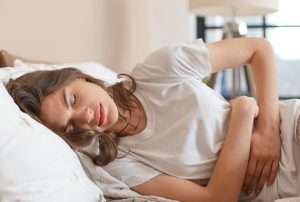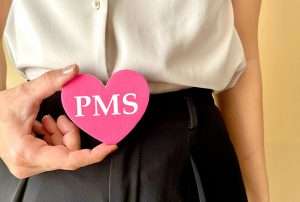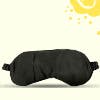7 different type of premenstrual syndrome (PMS)
The Premenstrual Syndrome & Various PMS Types
There are many different signs and symptoms of premenstrual syndrome (PMS), including mood swings during periods, sensitive breasts, food cravings, exhaustion, irritability, and sadness. 4 out of nearly 5 women that are menstruating are believed to possess premenstrual syndrome.
A consistent pattern of recurrence exists for symptoms. However, the emotional and physical changes you go through with premenstrual syndrome can range from hardly perceptible to severe. You mustn’t let these issues dictate how you live, though. Treatment and lifestyle modifications can be used to minimize or alleviate the symptoms and indications of premenstrual syndrome.
Some people’s physical discomfort and mental turmoil are so severe that it interferes with their daily life. No matter how severe the symptoms are, the majority of women begin to experience some amount of relief four days after the beginning of their monthly cycle. Many women these days are actively turning to the aid of various PMS supplements which helps them have less painful days.
Types Of Premenstrual Syndrome
1. PMS – A
A is for anxiety, which frequently coexists with anger and unpredictable mood swings. Oestrogen dominance is primarily regarded to be the cause of type-A PMS. As the name implies, oestrogen dominance refers to the idea that it predominates over progesterone as our primary sex hormone.
Anxiety, mood changes, water retention, and sometimes heavier, more menstrual cramping are just a few of the typical PMS symptoms that can come from this hormonal imbalance. You might also notice that your cycle is a little bit shorter and that your period comes a little earlier than every 28 days. Oh, the delights!
2. PMS – C
C represents your cravings here. Even if it’s crucial to take into account a combination with a number of other PMS kinds, if your primary weakness is a sweet tooth, you probably come under the PMS-C classification.
It’s crucial to spot this one as soon as you can since, over time, giving in to cravings can lead to unstable blood sugar, which in turn can affect your sex hormones further, creating an unfavorable vicious cycle. PCOS is one condition that is frequently linked to this hormonal imbalance.
3. PMS – P
P for the very annoying pain. Since PMS-P is a relatively recent subtype of PMS, it is less well known and recognized and frequently overlaps with the other subtypes; nonetheless, in some instances, it can be the main symptom.
Prostaglandins, pro-inflammatory chemicals that leak from the womb while you have your period, are regarded to be the primary cause of a large portion of the discomfort experienced by period cramps. Although the precise reason for this (and why certain women suffer more frequently than others) isn’t well understood, usually larger periods can make matters worse, thus correcting hormone imbalances (such as in the situation of PMS-A) can be a beneficial first step.
4. PMS – H
Hyperhydration stands for H. While any of the 5 subtypes of PMS outlined above may accompany PMS-H in some women, for others, bloating and water retention are the primary symptoms. A smart place to start is by correcting any visible hormone imbalances while also assisting your body with some pertinent dietary, lifestyle, and supplement choices.
5. PMS – D
D is for depression. Now, there is a distinction between depression and a bad day. If you think you might have depression, you should seek medical attention right soon.
Poor oestrogen (and high progesterone in comparison) is frequently the foundation of low mood and hormone issues. You can notice that your periods are occurring less often than once every four weeks because of the hormone imbalance, which frequently results in somewhat longer menstrual cycles.
While formerly only a small percentage of women experienced PMS-D, it is being observed that the characteristic symptoms of “low oestrogen” are now more frequently experienced by women. This is likely due to the increased use of hormonal contraceptives.
PMS Symptoms
Some of the most commonly experienced symptoms of premenstrual syndrome are:
Bloating in the stomach, cramps, soreness or swelling in breasts, back pain, zits, pimples or acne, sleeping longer or more than usual, migraines, and a number of various physical symptoms are some of the physical effects of PMS.
Emotional symptoms include irritability, anxiety, fatigue, food cravings, difficulty concentrating, feelings of sadness or apathy, weeping episodes, or irrational, unpredictable outbursts.
Estrogen levels peak in the second part of the menstruation cycle, during the time women begin to experience PMS symptoms, and then drop abruptly, making you feel more drained or lethargic.
Related Article – PMS Symptoms are real!
Mood Swings During Periods
First, a word or two on what triggers mood changes during periods. Premenstrual syndrome, or PMS, might start up to a week prior to your period and send your emotions on a roller coaster. In a single day, you might experience anything from feeling like you’re about to cry to get so upset you could scream.
These mood shifts before your period are brought on by your body’s shifting hormone levels before menstruation. Mood swings before periods are primarily brought on by the drop in oestrogen. Serotonin is indeed one of the key brain chemicals that lift and maintains your mood, but oestrogen can make it less abundant in your brain.
The precise cause of the premenstrual syndrome is unknown, however, a number of variables could be to blame for the condition:
Hormone cycles change. Premenstrual syndrome symptoms and signs alter with hormonal changes and go away throughout pregnancy and menopause.
Chemical alterations in the brain. Variations in serotonin, a cerebral chemical (neurotransmitter) believed to be essential to mood states, may cause PMS symptoms. Low serotonin levels may contribute to premenstrual depression, tiredness, snack cravings, and difficulty sleeping.
Depression. Despite the fact that depression may not necessarily induce all of the symptoms in all women with extreme premenstrual syndrome, some of them go undetected
Related Article – How PMS Supplements Work To Ease Your Mood
How can you deal with your mood swings?
- First, get moving! Endorphins are your brain’s natural feel-good chemicals that improve mood, and exercise releases endorphins. Do you know that buzz you get after playing football with pals or sprinting around? That is caused by endorphins.
- Try avoiding foods high in sugar and caffeine next. These make you feel better temporarily but then cause you to crash. The ups and downs brought on by sugar and coffee can be particularly difficult if you already experience mood fluctuations before your period.
- Finally, make an effort to lessen your tension. Although stress may not directly cause mood changes during your period, this can definitely make you feel terrible. To give yourself a break, try to stay away from stressful situations both before and during your period
- If everything else fails, discuss your prescription alternatives with your doctor. Antidepressants can occasionally be helpful, especially around period time. Your doctor and you can work together to find a solution that best suits your needs.
- People also try various PMS Gummies and other supplements that further help in relieving these symptoms caused due to PMS.
Related Article – How to Avoid PMS Mood Swings?
FAQs
1. What distinguishes PMDD from PMS?
A more serious variation of PMS is PMDD (Premenstrual Dysphoric Disorder). If a person has PMDD, their psychological and emotional symptoms are significantly more intense and can lead to extra signs of clinical depression or anxiety, even though they may still suffer bloating and other physical PMS symptoms.
2. How does this PMS Supplement function?
Premenstrual syndrome (PMS) problems like cramps, acne, irritability, tension, mood swings, and more can be treated with the use of natural substances and herbs like Chaste Berry, Ginseng, Vitamin B6, and Magnesium.
3. Can you take this PMS supplement while using birth control?
In the event that you are on birth control, nursing, or pregnant, we advise you to speak with your doctor before taking PMS Supplement.
4. When do the PMS symptoms begin to get really worse?
As you enter your late 30s or early 40s and approach menopause, also known as perimenopause, your PMS symptoms may worsen. This is particularly valid for females whose moods are susceptible to fluctuations in hormonal changes during menstruation.
5. How long before the period does PMS last?
Hormonal changes during the monthly cycle are assumed to be the root cause of PMS, a term used to describe a broad range of physical and psychological symptoms. However, the actual root cause is still a mystery. Symptoms typically begin five to ten days well before the period and disappear at the beginning of the period or shortly thereafter.
6. What sleeping position is ideal during a period?
The fetal posture during sleep If you often sleep on your back or stomach, try rolling over and tucking your legs and arms in. The ideal sleeping position to ease the stress that can worsen cramps is in this posture since it relieves strain on your abdominal muscles.
7. Do these PMS Supplements work for menopause?
Indeed, the PMS supplement aids in hormone balancing, enhancing the neurological system, and preventing mood swings, irritability, and acne throughout menopause.















